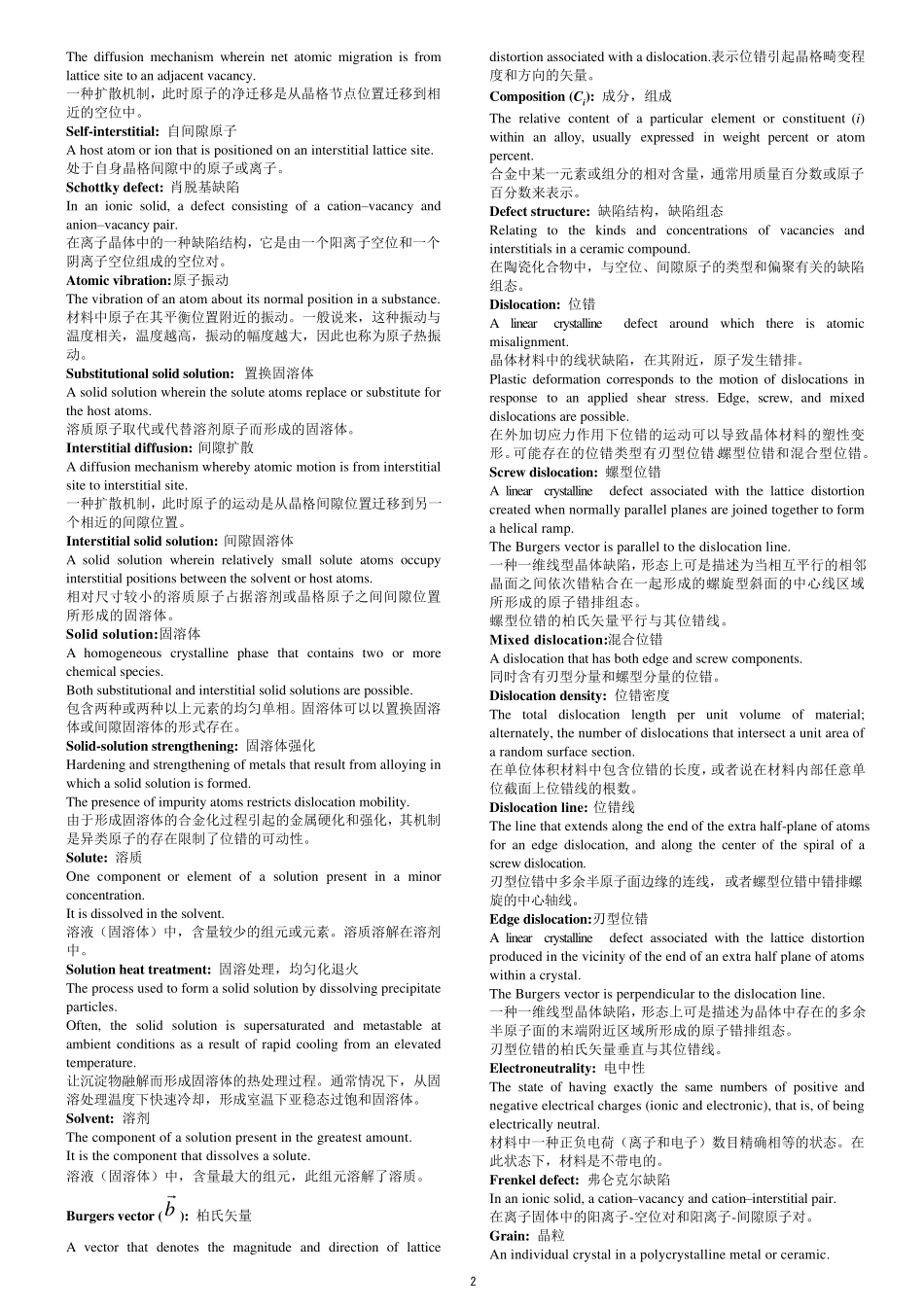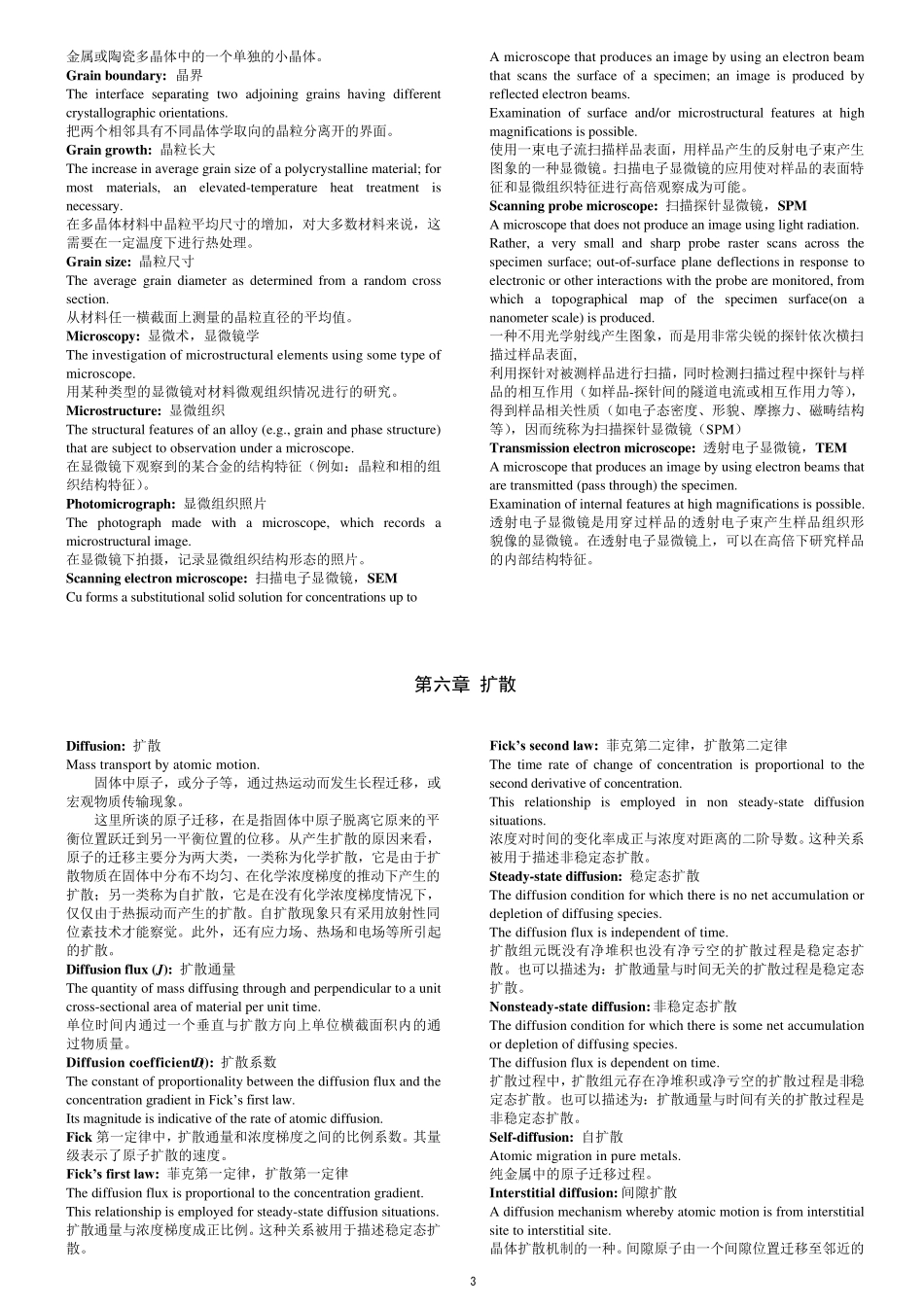1 Fundamentals of Materials Science 材料科学基础名词与术语 第一章 绪论 metal: 金属 ceramic: 陶瓷 polymer: 聚合物 Composites: 复合材料 Semiconductors: 半导体 Biomaterials: 生物材料 Processing: 加工过程 Structure: 组织结构 Properties: 性质 Performance: 使用性能 Mechanical properties: 力学性能 Electrical properties: 电性能 Thermal behavior: 热性能 Magnetic properties: 磁性能 Optical properties: 光性能 Deteriorative characteristics: 老化特性 第二章 原子结构与原子键 Atomic mass unit (amu): 原子质量单位 Atomic number: 原子数 Atomic weight: 原子量 Bohr atomic model: 波尔原子模型 Bonding energy: 键能 Coulombic force: 库仑力 Covalent bond: 共价键 Dipole (electric): 偶极子 electronic configuration: 电子构型 electron state: 电位 Electronegative: 负电的 Electropositive: 正电的 Ground state: 基态 Hydrogen bond: 氢键 Ionic bond: 离子键 Isotope: 同位素 Metallic bond: 金属键 Mole: 摩尔 Molecule: 分子 Pauli exclusion principle: 泡利不相容原理 Periodic table: 元素周期表 Polar molecule: 极性分子 Primary bonding: 强键 Quantum mechanics: 量子力学 Quantum number: 量子数 Secondary bonding: 弱键 valence electron: 价电子 van der waals bond: 范德华键 Wave-mechanical model: 波粒二象性模型 第三章 金属与陶瓷的结构 Allotropy: 同素异形现象 Amorphous: 无定形 Anion: 阴离子 Anisotropy: 各向异性 atomic packing factor(APF): 原子堆积因数 body-centered cubic (BCC): 体心立方结构 Bragg’s law: 布拉格定律 Cation: 阳离子 coordination number: 配位数 crystal structure: 晶体结构 crystal system: 晶系 crystalline: 晶体的 diffraction: 衍射 face-centered cubic (FCC): 面心立方结构 第五章 晶体缺陷 Alloy: 合金 A metallic substance that is composed of two or more elements. 由两种及以上元素组成的金属材料。 Weight percent (wt%):质量百分数 Concentration specification on the basis of weight (or mass) of a particular...


